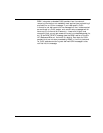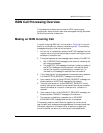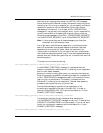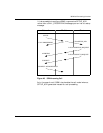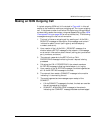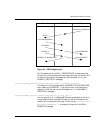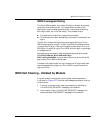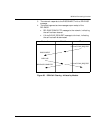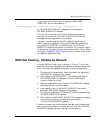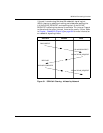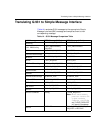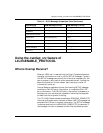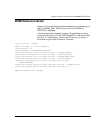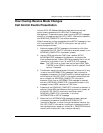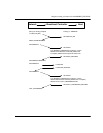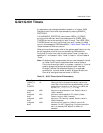
ISDN Call Processing Overview
November 2009 325
If you want manual control over the sending of RELEASE
COMPLETE, set the field below to 1:
l43.data.enable_protocol.level3.cnfg.q931.release_complete_control = 1
An L4L3mCLEAR_REQUEST message will then send the
RELEASE COMPLETE message.
The host cannot consider a call disconnected and the channel
available for another call until the L3L4mCLEAR_REQUEST
message has been received from the module.
If the call is made using Switched 56 robbed bit signaling (not
ISDN), there is an additional waiting period between sending the
L4L3mCLEAR_REQUEST and receiving the L3L4mCLEAR_
REQUEST indicating the channel is available. This interval is equal
to the value of the guard_interval_timer and is usually 100 ms. Refer
to Chapter , Robbed Bit Signaling on page 264 for more information
on robbed bit signaling timers.
ISDN Call Clearing - Initiated by Network
A typical ISDN call clearing is illustrated in Figure 51. In this call
scenario, the module responds to the network’s request to disconnect
a call. The following message exchange is relative to the module:
1. The network initiates the call clearing procedure by sending a
DISCONNECT message to the module.
2. Upon receipt of the DISCONNECT, the module generates an
L3L4mDISCONNECT message to the host indicating the
network is clearing the call.
3. The host responds with an L4L3mCLEAR_REQUEST message
indicating the call should be cleared.
4. Upon receipt of the L4L3mCLEAR_REQUEST, the module
generates a RELEASE message to the network.
5. The network responds to the received RELEASE by generating a
RELEASE COMPLETE message.
6. Upon receipt of the RELEASE COMPLETE message, the module
informs the host the call has been cleared using the
L3L4mCLEAR_REQUEST message.
It should be noted that the host cannot consider a call disconnected
and the channel available for another call until the L3L4mCLEAR_
REQUEST message has been received from the module.



